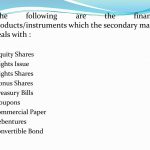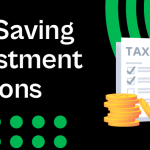
You’ve probably heard of hedge funds and other unique investments that only the rich can invest in. Chances are, hearing about these investments makes it seem like you must have a lot of money to start investing money. In fact, 70% of people think you need Lakhs of rupees or more to open an investment account.
Thankfully, that is not the case. You can start investing and building a nest egg with just a little money. Here are 12 smart small investments to consider if you’re ready to make some savvy money moves.
11 ways to start investing without much money
If you don’t have a big investing budget, you still have several investment options to choose from, including investing in the stock market. Consider these options if you want to get started building a healthy investing habit.
Invest in yourself
Traditional investments are great, but you may be able to earn even more money investing in yourself. You can buy books or courses to teach yourself new skills that make you more marketable at your job. You can verify your skills by taking tests and earning certifications. These can show your expertise in a particular skill.
You may want to pick up new skills that allow you to start a profitable side hustle. In many ways, successfully investing in yourself could result in making more money in the long run versus investing in traditional investments. Thoroughly investigate any potential training before purchasing it. Although many legitimate opportunities exist, scams are present too.
Invest in your peers
Traditional stocks, bonds, ETFs, and mutual funds aren’t a great fit for everyone. If you’d rather invest your money with other people, Lending Club, Committee, or Prosper may be a better fit. These companies connect individual borrowers with people willing to lend money. This concept is called peer-to-peer lending.
You can invest as little as $25 in a loan to a borrower. Once enough people provide enough money to fund the loan, the peer-to-peer lender gives the borrower the money. Then, the peer-to-peer lender collects payments, including interest, and remits the payments to you.
Getting repaid hinges on your borrower making payments. If they default on the loan, you could lose your investment. The return on your investment may be worth the risk depending on your goals.
Invest in an index fund
Whether you decide to invest in a taxable investment account or a retirement account, you have to choose what to invest in. An index mutual fund is one option to consider adding to your investment portfolio.
Essentially, an index mutual fund is a single investment you can purchase. It holds several investments within it. These investments aim to track the returns of an index, such as the S&P 500. The benefit of investing in an index fund is that it allows you to invest without buying a share of each stock within the index.
Index mutual funds may have minimum initial investments to get started, but several do not require a minimum deposit. Fidelity offers a handful of zero minimum investment mutual funds options.
Another upside is the investment is diversified, which means you spread out the risk. Rather than holding a single company’s stock, you hold multiple stocks through an index mutual fund. This disperses your risk if one firm performs poorly or goes bankrupt. You still have other companies your mutual fund has invested in that may outperform.
You do have to watch out for fees, though. If two mutual funds earn the same returns, the one with lower fees allows you to keep more money. Even a 1% difference in fees can make a massive difference over the long term.
Diversify with an ETF
Another possibility for small investors is an exchange-traded fund. ETFs work similarly to mutual funds. One significant difference is you can trade an ETF throughout the day. You can only buy and sell mutual funds once per day.
As with mutual funds, ETFs can provide diversification to help you avoid concentrating risk in a single stock. ETFs may also come with lower fees in some cases. They require you to have only enough money to purchase a single share of the ETF. Companies that allow fractional share investing may not have this limit.
If you’re looking for a place to invest in ETFs, consider opening an account with Upstox. This service allows you to invest in stocks and ETFs with no minimum investment.
Open a retirement account
Opening a retirement account can help you start saving for retirement. Retirement accounts typically offer some form of tax advantage to incentivize you to invest for your future today.
For instance, a Roth IRA doesn’t give you a tax deduction today. Instead, you get to withdraw the money tax-free in retirement as long as you meet the requirements. On the other hand, a traditional IRA may give you a tax deduction today. You have to pay taxes when you withdraw the money in retirement.
Both accounts may have penalties if you withdraw money before age 60. Be confident you can leave this money invested for the long haul. Ultimately, the type of account you choose depends on your situation and goals.
Make sure to open a retirement account with a company that allows you to start investing with the amount of money you have available. Several no minimum account balance options exist. You shouldn’t have too many problems finding a suitable retirement plan.
Purchase fractional shares of stock
If you prefer to pick the individual companies you want to invest in, you can still invest in stocks without a lot of money. Several new investing apps, including Upstox, allow you to buy fractional shares of stock and ETFs.
Rather than having to save a big amount buy a single share of a popular technology company, you can buy fraction shares of the company for low investment. This makes it easy to diversify your portfolio of individual stocks.
You can use fractional shares to buy partial shares of several companies with a relatively small investment. It would be difficult to do this with whole shares unless you had a significant amount of money saved.
Not all brokerage firms allow fractional share investing. If this is how you want to invest, make sure you verify fractional share investing is an option.
Upstox Benefits
- Get $10 to make your first investment
- Invest in stocks, bonds, and ETFs
- Fractional shares available
- Start investing with just $1
Get started in real estate
When most people think of investing in real estates, such as commercial properties or residential rental properties, they assume they need to purchase an entire building. This could easily cost you $100,000 or more.
You can start investing in real estate with much less money using real estate crowdfunding companies such as DiversyFund. DiversyFund allows you to get started with a $500 investment if you choose to invest in its DiversyFund Growth REIT (real estate investment trust).
The company pools the investments of several investors and then uses the money to buy real estate. This particular investment aims to renovate and reposition select properties to increase their value.
This fund doesn’t trade publicly, which means it may be difficult or impossible to sell your investment on short notice. That said, this investment targets medium-term investors that want to invest in private multifamily real estate, such as apartment complexes.
You must decide if an investment’s potential returns like this one exceed the risks you’d have to take in participating. If it does and fits your investing goals, it may work for you.
DiversyFund Benefits
- Co-own a professionally managed portfolio of real estate assets
- Create your free account in just 5 minutes
- Use code FB50 and get a $50 Amazon gift card when you make your first investment
Put your money in a CD account
The best small investments don’t have to involve traditional options such as stocks or bonds- sometimes a bank account is a good option too. You can invest in something as simple as certificates of deposit. When you invest in a CD, you let the company know you’re willing to leave the money with the institution for a set period. In exchange, the company pays you a predetermined interest rate.
This may be a good option if you need the money at a set point in the future and can’t risk losing any of your investment. The interest compounds, which means you can earn additional interest on the interest you already made.
CDs are often Federal Deposit Insurance Corporation or National Credit Union Association insured. This provides security knowing your money will be there when the CD matures.
Look into a money market
If you don’t want to lock your money away for a set period but still want a higher interest rate than a checking account or savings account, consider a money market or high-yield savings account. Although interest rates have been declining as a whole, these accounts could be a decent savings option when interest rates start rising again.
Certain money market accounts may have a minimum investment required, but it varies by institution. Check before you try to open an account to make sure it won’t be an issue.
Consult Robo-advisor
You can’t normally use a traditional fiduciary financial advisor without significant assets already built up unless you want to pay a fee for working with them. Several new companies, called Robo-advisors, have started operations within the past decade to address this problem.
Robo-advisors use technology to help you build a diversified portfolio. The technology works to keep you on track with your goals rather than having a human financial advisor do the work for you. Financial experts may build Robo-advisors’ portfolios. Then, you choose one to invest in based on your goals and risk tolerance.
The real benefit of Robo-advisors is they often have no or low minimum initial balance requirements and low fees to start investing. Traditional fiduciary financial advisors may not talk to you unless you have $100,000 or more already invested. Additionally, the fees for Robo-advisors are often lower than the conventional advisor’s usual 1% annual assets under management fee, a fee based on the amount of money you have invested with the company.
One Robo-advisor you may want to consider is Betterment. It has no minimum initial investment requirements. Its fees start at .25% of assets under management annually for its digital plan.
If you eventually build $100,000 in investments, you can move to its premium tier. It offers unlimited access to human Certified Financial Planner (CFP) professionals. This tier costs .40% of assets under management annually.
Get started with micro-investing
Micro-investing allows you to invest the tiniest amounts of money repeatedly to start building your portfolio. Upstox is a popular app that enables you to invest your spare change with a concept called round-ups.
You choose from a handful of portfolios of ETFs designed with help from a Nobel laureate. Then, each investment builds the number of shares you own.
The bottom line
You don’t have to have hundreds of dollars sitting around to start investing. Thanks to technology and innovation, investing today is more accessible than ever. Now you know you can invest small amounts of money, it’s time to start working toward your personal finance goals. Just keep in mind that no investment is risk-free.
We’ve highlighted only 11 smart investments you can start making in this list. Even more, low-cost investment ideas exist if you look for them. Once you find an option that fits your needs and long- and short-term financial goals, start setting aside money and developing good investment habits.
Financial and Business expert having 30+ Years of vast experience in running successful businesses and managing finance.





